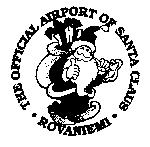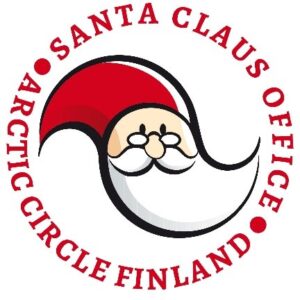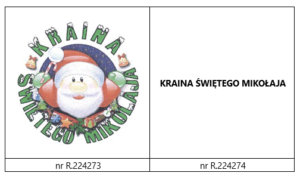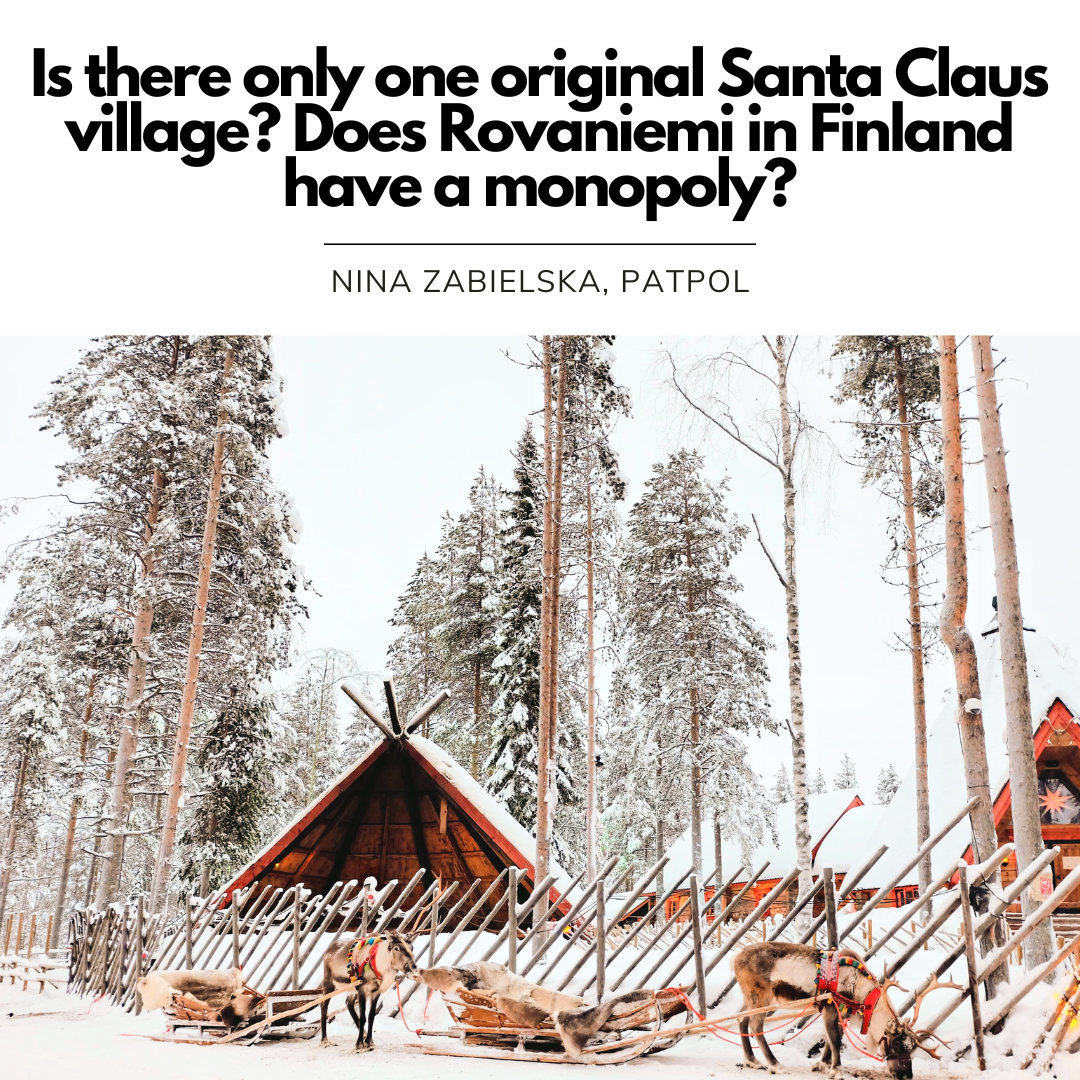Or how to track down Santa’s home by following trademark registrations
Recently, trips to Rovaniemi, a town in northern Finland considered the true home of Santa Claus, have become increasingly popular. These trips are organized by well-known travel agencies, but they can also be planned independently. Santa Claus resides in Rovaniemi year-round (after all, he needs time to prepare for Christmas), accompanied by his reindeer and husky dogs. The festive town also has a post office, which receives letters from all around the world [1].

European Union Trademark registered for post office services, No. 011443744.
In Rovaniemi there is also the Official Santa Claus Airport, which is a registered trademark, and its protection extends over the whole European Union:

European Union Trademark, No. 000272047.
This trademark is registered in the name of Finavia Oyj, a Finnish airline company that manages 20 airports across Finland and also looks after Santa Claus Airport.
Why Rovaniemi?
Rovaniemi is the capital of Lapland, located on the edge of the Arctic Circle, where temperatures can drop below -40 degrees Celsius. How did the idea that Santa Claus lives there originate? It was the city local authorities that took care of this and carefully cultivated the legend.
Rovaniemi, like Warsaw, has a sad past. In 1944, the Germans destroyed about 90% of the city. The Finnish Architects’ Association was given the task of planning and rebuilding the city. It is interesting to note that the layout of the streets was designed in such a way that they formed the shape of reindeer antlers on the map. Financial support for the reconstruction of the city was provided by First Lady Eleanor Roosevelt, who then wanted to visit the town. Although the full ‘reindeer antler’ city plan was not implemented, Rovaniemi became a must-see destination in the Arctic Circle [2].
Around 1984, planes began to arrive in Rovaniemi with tourists wanting to see the Arctic Circle, and it was then that local entrepreneurs created Santa Claus Village. According to the Finnish legend, Santa Claus came from Korvatunturi (literally “Ear Mountain” in Finnish), a peak on the border between Finland and Russia that has the shape of an ear. The legend says that thanks to the shape of the rocks to form an ear, Santa Claus can hear the wishes of every child in the world [3]. However, Korvatunturi was very difficult to reach. There were only two roads leading there, both about 500 km away from the Rovaniemi Airport, and back in the 1990s, the access was even more difficult. Moreover, Rovaniemi already had a functioning airport, making in the perfect location for establishing Santa Claus’ village! In the center of the village there is a cabin that was first built for Eleanor Roosevelt’s visit, then enlarged and surrounded by an entire wooden village with shops, a “reindeer farm” offering rides, Santa’s building, and a post office so that visitors could send letters from the Arctic Circle [4]. The myth flourished, and the local authorities together with entrepreneurs eagerly continued to support this legend. The city (Rovaniemen kaupunki – the city of Rovaniemi) registered in its own name a word-figurative trademark protected in the territory of the entire European Union:

European Union Trademark – SANTA CLAUS OFFICE ● ARCTIC CIRCLE FINLAND, No. 017558529.
To protect the interests of local entrepreneurs, Rovaniemi proceeded with an additional registration of the word mark “The Official Hometown of Santa Claus” (EUTM 008183535) in the EUIPO, making it another trademark protected not only in Finland, but throughout the entire EU.
Is Rovaniemi the only place that can call itself Santa Claus’ village?
Although Santa Claus’ village was not established in Korvatunturi, a reindeer farm exists there, and the area is a popular destination for dog sled racing. Letters sent to Santa’s office in Korvatunturi are forwarded to his headquarters in Rovaniemi [5]. Overall, the regions appear to agree that Rovaniemi hosts the original Santa Claus village in Finland.
Yet, is it only the Finns who can own Santa’s village? Well, not necessarily. From an intellectual property perspective, Santa Claus is in the public domain, meaning anyone who loves Christmas is fee to use this magic character.
It is interesting to note that there are at least two Santa Claus’ villages in Poland where he is deemed to be living. One of them owns the following trademark registrations in the Polish Patent Office:

R.224273 (word-figurative) The Land of Santa Claus
R.224274 (word) The Land of Santa Claus
The Land of Santa Claus, which holds the above registrations both as a word and as a word-figurative trademark in Poland, is located in Kołacin near Łódź. Another location, Bałtów, also has its own “Santa Claus Village”, although it is not registered as a trademark in the Patent Office. Additionally, the municipality of Stoszowice has registered its own word mark with the Polish Patent office: Polska Wioska Świętego Mikołaja-Przystanek Mikołajów (Polish Santa Claus Village – Santa Claus Stop) under No. R.189023.
Regardless of where the real Santa Claus resides, let’s hope that this Christmas he manages to visit every single soul waiting for him.
[1] www.korvatunturi.fi/en/ [access: 11.12.2024]
[2] https://www.theguardian.com/cities/2018/dec/19/the-dark-history-of-santas-city-how-rovaniemi-rose-from-the-ashes-alvar-aalto [access: 11.12.2024]
[3] https://santaclausfinland.fi/en/korvatunturi/ [access: 11.12.2024]
[4] https://www.theguardian.com/cities/2018/dec/19/the-dark-history-of-santas-city-how-rovaniemi-rose-from-the-ashes-alvar-aalto [access: 11.12.2024].
[5] www.visitrovaniemi.fi and https://santaclausvillage.info/ [access: 11.12.2024]

Nina Zabielska (Jankowska) is a patent attorney in Trademark and Industrial Design Department at Patpol.. She is a graduate of e-business at the Warsaw School of Economics and a graduate of law at the Kozminski University. Contact with the author

